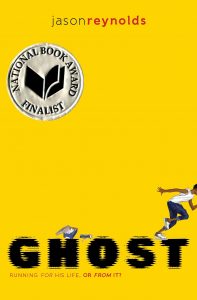Getting lost in a book is great; being able to picture the surroundings and the characters can help you lose yourself in the story. It can make the story more interesting or more meaningful. But for children of color, children with disabilities, LGBTQIA+ children, and others, it can be hard to find your story reflected in the pages of a book.
My name is Maija, and I work at the Boston Public Library's Central Library in Copley Square. I've teamed up with children's librarians from branches around our city to share some of our favorite inclusive books with you, so that your children can find themselves in a book, too.
One of my favorite stories growing up was The Patchwork Quilt by Valerie Flournoy. The little girl on the cover had the same braids as me and dressed just like me in jeans and an (oh-so-80s) puffed-sleeve blouse. I so vividly remember leafing through the pages. The illustrations by Jerry Pinkney felt warm and faded and worn, like the quilt Tanya’s grandma spoke about as she stitched fabric pieces together. I loved the idea of taking the fabrics and weaving them into a story. Tanya had a big family, just like my family, and I wanted a scrap of my Grandpa’s overalls or one of my Gam’s garden work shirts to entwine into our own story just like I saw Tanya and her Grandma doing in the book. The image of Tanya and her Grandma on the cover made an indelible impression on me.
I had a teacher who shared this book with me knowing that I had a big, close-knit family, and I really identified with the story. As librarians, we strive to be educators like that. We want to provide the young readers in our communities with books that they can relate to.
Finding those books can take some digging. For example, according to the Cooperative Center for Children’s Books, U.S. publishers released 3,500 children’s books in 2017. Only 868 (24%) were about people of color. Only 498 (14%) were written by people of color. Now think about national demographics. Think about Boston. In 2014, the Boston Redevelopment Authority found that “76% of Boston Public Schools students are Black/African-American or Hispanic.” You can see the problem.
This matters to our work as children’s librarians. It matters to parents, teachers, and all adults who want children to love reading. What children read is important. Take Jason Reynolds, multiple award-winning author of the middle-grade novel Ghost (and many more), as an example. He didn’t like reading until high school, and he never thought he’d be an author because “[i]t’s hard to be what you can’t see.”
As children’s librarians working in diverse and unique communities, we try to change and challenge that. 3,500 books is a lot of books. When you visit your local library—whether it’s a neighborhood branch or the Central Library—you’ll only see a fraction of what is published. We try to choose these books carefully. We want to fill our libraries (your libraries) with books that are absorbing, thought-provoking, entertaining, and excellent. We want our shelves filled with books that inspire and support children as lifelong readers, learners, and dreamers. We believe that seeking excellence is synonymous with seeking diverse and inclusive stories, characters, and book creators.
In this blog, we will be introducing you to characters, authors, and illustrators whose diverse voices reflect our world. We want to help you find books that feature characters and communities that are under-represented in children’s books. We want to help all children find themselves in a book.
Meet your Diverse Books blogging team:
- Angela Bonds is the children’s librarian at the Grove Hall Branch. She has worked for the Boston Public Library as a librarian, a library assistant, and a shelver.
- Sujei Lugo, a former school librarian in Puerto Rico, is the children’s librarian at the Connolly Branch. She is an active member of REFORMA, ALSC, and the Latinxs in Kid Lit blog.
- Maija Meadows Hasegawa is a Youth Programs Librarian at the Central Library in Copley Square. She previously worked at two branches in Dorchester.
- Claire Waldron-Gross is the children’s librarian at the Egleston Square Branch. She previously worked as Associate Editor at the Horn Book Magazine.
Citations:
- “Boston’s Racial Groups.” Boston Redevelopment Authority Research Division. August 2014. http://www.bostonplans.org/getattachment/68068312-d112-4b02-8ec6-26727c7e9072 (Accessed March 9, 2018)
- Krug, Nora.”How a kid who didn’t read a book until he was 17 grew up to become a literary star.” The Washington Post (Washington, D.C.), October 23, 2017. https://www.washingtonpost.com/entertainment/books/he-didnt-read-books-as-a-kid-but-jason-reynolds-wants-to-make-sure-your-kids-do/2017/10/23/ed4b55da-9d4c-11e7-9083-fbfddf6804c2_story.html?utm_term=.739fbcad44d1 (Accessed March 9, 2018)
- "Publishing Statistics on Children's Books about People of Color and First/Native Nations and by People of Color and First/Native Nations Authors and Illustrators", Cooperative Children's Book Center School of Education, University of Wisconsin-Madison, February 22, 2018.
- https://ccbc.education.wisc.edu/books/pcstats.asp (Accessed March 8, 2018)



Add a comment to: Finding Your Reflection in a Book